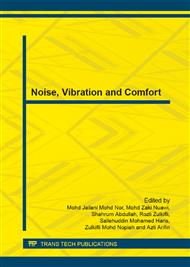p.151
p.156
p.161
p.167
p.172
p.178
p.187
p.193
p.197
A Study on Ergonomic Workstations for Standing Operators at a Manufacturing Factory in Malaysia
Abstract:
Ergonomically designed workstation is vital towards improving health and safety of operators. This study was carried out at the assembly department to assess female operators effectiveness at standing workstations during assembling different components and parts for making electronic product in a manufacturing factory. Long working hours with static standing postures can lead to musculoskeletal disorders. The study main objectives are to assess, identify risks and body parts complaints with respect to standing workstation. The methodology use in this study includes anthropometric data measurements of female operators, standing risk assessment and body parts symptoms survey. One hundred female operators working at standing workstations took part in the study. This study revealed three major types of musculoskeletal disorders (MSDs) observed in this factory, they are pain at the shoulder region, pain at the leg region and pain at the upper back region. Based on the findings from this study, the authors have proposed a standing workstation designs that overcome the MSDs.
Info:
Periodical:
Pages:
172-177
Citation:
Online since:
December 2013
Authors:
Keywords:
Price:
Сopyright:
© 2014 Trans Tech Publications Ltd. All Rights Reserved
Share:
Citation:


